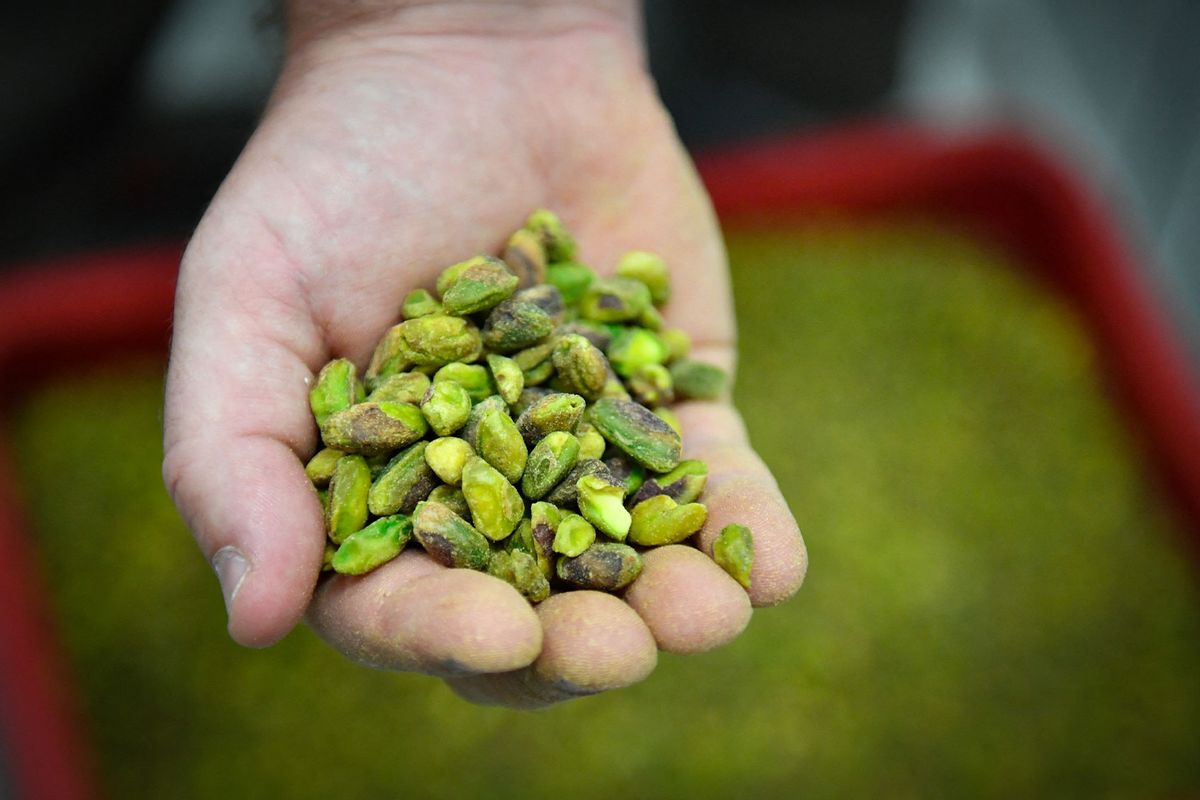Proteins are crucial to the body’s development, stabilization and recovery. Ensuring your diet is high in protein is important for the mechanics of the body and finding a suitable source of protein is critical, especially with plant-based diets.
There are several avenues to explore to incorporate these vital building blocks into your meal planning. Some of the most readily available proteins come in the form of nuts, which are also sources of flavor, texture and of course nutrition. Here are three to consider cooking with.
Pistachios
Protein in pistachios amounts to 21% of each nut by weight, a high level perfect for use in vegan and vegetarian diets. Pistachios are a tree nut that have part of human consumption for thousands of years. Native to the Middle East, evidence suggests that humans were cultivating and consuming pistachios as far back at 7000 B.C. The pistachio nut made its way across the globe as part of trade from China to the West, with its culinary etches left on cultures around the globe. It has been used as a source of food, for natural dye and in a multitude of natural folk remedies in history.
America has become the leading harvester of pistachios in the world. American pistachios tend to be harvested mechanically and therefore carry a reduced risk of contamination. In contrast, other nuts harvested more naturally by hand and dried in the sun are exposed to the elements.
Look for nuts that are bright in color with a good smell. Taste nuts upon inspection to ensure they have not spoiled or been exposed to high temperatures when stored or shipped. Always source from a reputable and traceable supplier that can attest to the origins of the nut. Most supermarkets will carry good quality pistachios in the U.S. Buy the shelled, raw variety: You can roast or grind them yourself and use in a variety of culinary applications.
Pistachios can be eaten raw, roasted or even pureed. Versatility leads to its use in an array of cooking methods from pestos to pie crusts, and the nut can even be integrated with certain wheats or grains to offer a vibrant and complex baked dough or filling.
With inherent sweetness, pistachios but can be used for sweet and savory foods. I often make a regular cookie dough and replace a portion of the flour with ground pistachios. This provides a full, rich and sweet flavor. I balance the texture of the cookie mix by adding whole pistachios to give a delicate crunch to each bite.
Store nuts in a cool place (32-40 F and 50-60% humidity) in a sealed container until ready to use, and rotate stock well. They will last around three months in this environment and when refrigerated can last around six months.
Brazil Nuts
I grew up with Brazil nuts playing a part in the ever-filled family nut bowl on the dining room table. The Brazil nut has a large fossil textured segment like shell with a tan nut inside. Contrary to the name, Brazil nuts are in fact the edible seed of one of the longest-living trees native to the Amazon rainforest. The South American seed is harvested for consumption and for oil. Brazil, Bolivia and the Ivory Coast are the three largest producers of Brazil nuts across the globe.
Brazil nuts contain large amounts of antioxidants, which aid in keeping the brain functioning well, and are prized for mineral antioxidant properties, like high a selenium content.
The Brazil nut is well-regarded in the culinary world for a smooth, buttery texture and rich, nutty taste. Brazil nuts can be cooked or roasted and then used to make sauces such as pesto or most commonly added to a trail mix. You will often find the seed in part of a granola mix or even used as a crust. Vegan nut milk and cheese can be made from Brazil nuts, thanks to the smooth texture. On my travels in Northwestern France, I will never forget a crepe stall in a local market that served the most amazing banana, Brazil nut and bitter chocolate crepe. The texture of the nut in contrast to the smooth banana and warm dripping chocolate was amazing.
Source Brazil nuts from a reputable supplier and either buy in the shell or peeled and cleaned. Most large supermarkets or health food stores will carry Brazil nuts both ways. If for snacking, I recommend buying in the shell and cracking piece by piece. If using in larger culinary applications, go for the shelled and bagged variety. Brazil nuts are best stored in a cool dark pantry and will normally last around a month in a sealed container. If needed, refrigeration can extend the lifespan up to a few months.
Walnuts
As a cook, I am a self-confessed walnut “nut.” Although, as with the Brazil nut, the walnut is botanically the seed of a drupe. The stone fruit can be opened after ripening to reveal walnut seeds. The seed has a rich coating that is ripe with antioxidants.
Walnuts come in a few varieties, including the English walnut and the black walnut. The English variety is most commonly consumed globally, and black walnuts grow in large quantities in North America where they are more commonly found. English walnuts taste subtle, buttery and smooth. Black walnuts, on the other hand, have a stronger flavor: a little bitter with a lasting earthy aftertaste.
Omega-3 polyunsaturated fatty acids make walnuts an essential food for brain function and immune system repair. Walnuts are also high in vitamin E and folic acid, which help to support the heart.
The versatility of the walnut makes it the champion of the nut (seed, really) world. Walnuts are used worldwide in sweet and savory applications and work well with other flavor notes such as rich and tart. One of my go-to dishes at home is a simple salad made from bitter endive leaves, sharp and tangy Granny Smith apples, salty Roquefort cheese and a handful of caramelized walnuts. The sugary coating on the walnuts works well to balance the inherent earthy flavor and combines magically to complement the other bold flavors of the dish, not to mention a good crunch with every bite.
Another favorite application of mine is a super simple banana bread loaf made with overripe bananas and a handful of English walnuts for texture and buttery flavor. Use walnuts in lieu of pine nuts in any pesto recipe for an earthy and buttery dressing, and try roasting, grinding and adding to a smoothie.
Always source walnuts from a reputable supplier or supermarket. Walnuts often carry the risk of being tainted by high temperatures, so be sure to keep in a cool, dark environment and they will last for two months. If you are keeping small quantities, place in the refrigerator and keep for three to four months.
Learn more about cooking and baking with plant-based protein in ICE's Health-Supportive Culinary Arts program.




Shares